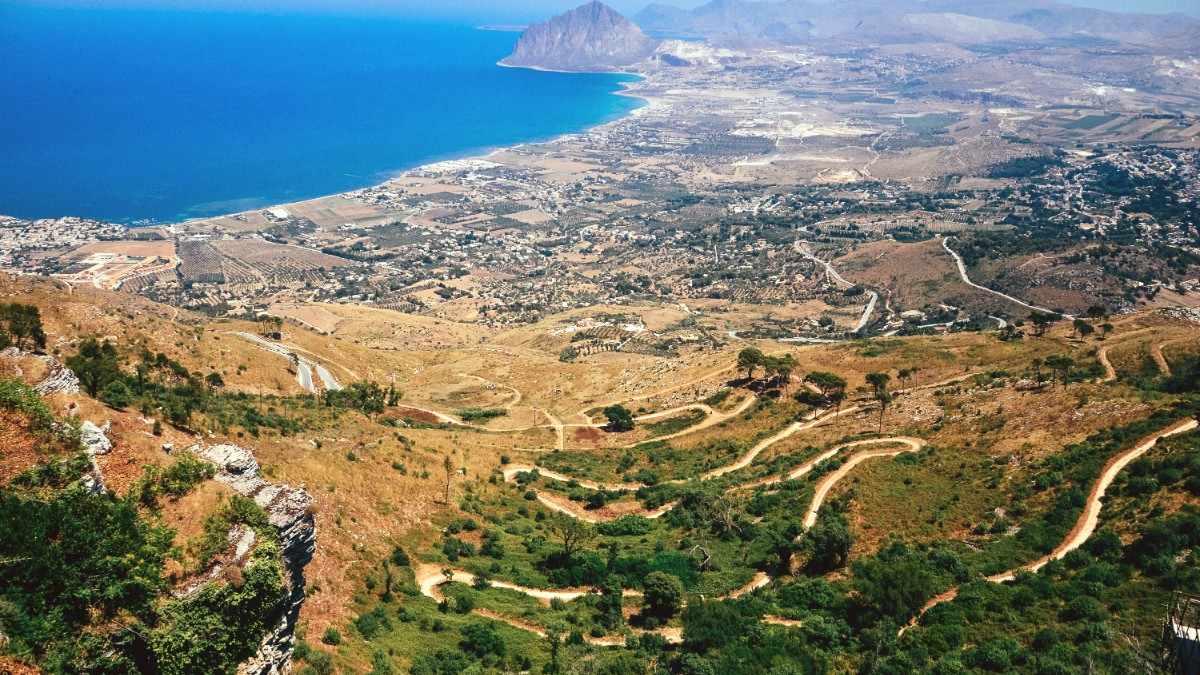
Sicily, Italy
Climate patterns throughout the year (temperature, precipitation, humidity)
Strong winds, especially the Maestrale, occur, particularly in spring. These winds at times disrupt ferry services to smaller islands, causing cancellations or delays. Check ferry schedules, especially if island day trips are planned.
Summers experience heatwaves, making midday outdoor activities challenging. Plan sightseeing for early mornings or late afternoons during these periods. Consider resting indoors or enjoying shaded cafes during the hottest parts of the day.
Crowded conditions; highest prices for flights and accommodation; very hot weather limits midday exploration.
Pleasant temperatures for sightseeing and hiking; fewer crowds than peak summer; moderate prices for services.
The sea might be cooler for swimming in April or early May; some seasonal businesses may not be open in early April or might close late October.
Lowest prices for travel and lodging; very few tourists; an authentic local experience without crowds.
Cooler weather; higher chance of rain; some attractions or restaurants have limited hours or close for the season; sea activities are generally not possible.
June through September. Sea temperatures are warm, and all lidos and boat rental services operate.
April-May or late September-October. Temperatures are comfortable, natural light for photography is excellent.
September, coinciding with grape harvest season. Many wineries feature special tours and events.
Late spring to early autumn for optimal light and activity. The sun's angle in late afternoon creates stunning reflections, ideal for photography. Observe salt workers at their tasks during these months.
Low season presents authenticity without crowds.
Trapani contains options for every budget, from economical to luxurious.
Currency: The official currency in Trapani and throughout Italy is the Euro (€).
This table provides daily cost estimates to help you budget for your trip to Trapani, depending on your travel style.
Prepare a list of emergency contacts.
During hot summer months, heat can become a concern. Stay hydrated by drinking plenty of water. Wear light-colored, loose-fitting clothing. Seek shade during peak sun hours, typically between 12 PM and 4 PM. Avoid strenuous outdoor activities during these times.
The Sicilian sun can be intense. Use high-SPF sunscreen, apply it generously, and reapply frequently, especially after swimming. Wear a wide-brimmed hat and sunglasses to protect your face and eyes.
Italy is a member of the Schengen Area, which simplifies travel for many nationalities.
Non-EU/EEA/Swiss citizens from countries without visa-free agreements (e.g., India, China) need this visa. It permits stays up to 90 days within any 180-day period across the entire Schengen Area. Entails submitting forms, supporting documents, and an interview at the Italian embassy/consulate.
Citizens of many countries (USA, Canada, UK, Australia, Japan, South Korea) may enter Italy visa-free for tourism/business. They may stay up to 90 days within any 180-day period in the Schengen Area. This arrangement gives considerable flexibility for short-term visits without a formal visa application.
From mid-2025, visa-exempt non-EU nationals obtain ETIAS authorization before travel to the Schengen Area. This is a pre-travel authorization, not a visa. Apply online prior to departure, once the system launches.
Italy levies no general entry fees for tourists.
Upon arrival at the port of entry (airport or seaport), standard immigration checks occur. Non-EU citizens might complete an arrival or departure card, depending on current regulations. Follow the instructions of immigration officials. The process is generally straightforward for travelers with complete documentation.
Generally, standard tourism activities in Trapani need no special permits. Access to some nature reserves, like Zingaro, may feature a small entrance fee for conservation. For most visitors, no additional permits are needed beyond standard travel documents.
No specific health-related entry needs for travelers. No particular vaccinations or health certificates for entry.
Valid for at least 3 months beyond your intended departure date from the Schengen Area. Issued within the last 10 years and contains at least two blank pages for stamps.
A confirmed flight or train ticket showing your departure from the Schengen Area.
Confirmed hotel bookings, a letter of invitation from a host, or other evidence of where you will stay during your visit.
Prices for accommodations, meals, transportation, and attractions.
Hostel dorm: €25-€40; Budget B&B/Guesthouse: €40-€70; Mid-range Hotel/Apartment: €70-€150; Luxury Hotel: €150-€300+.
Coffee: €1-€1.50; Pastry: €1.50-€3; Pizza/Arancina: €2.50-€5; Casual meal: €10-€20; Mid-range meal: €25-€40; Fine dining: €50+; Water: €1-€2.
Local bus: €1.20-€1.50; Erice cable car (return): €9-€11; Ferry to Favignana (return): €20-€30; Taxi (short): €8-€15; Car rental (economy): €30-€70. Museo Regionale: €6; Salt pans tour: €10-€20; Segesta/Selinunte: €6-€8.